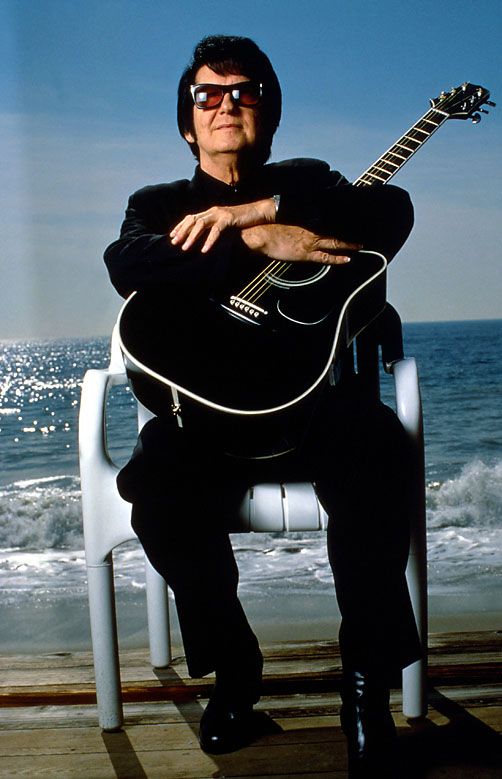Roy Orbison, the definitive voice of American rock and roll and a true music legend, has left an unforgettable imprint on the industry with his soulful ballads and timeless melodies. Among his numerous iconic tracks, “Crying” stands out as a deeply emotional and exquisitely complex masterpiece that continues to captivate listeners decades after its debut. Originally featured on the 1962 album Crying, this song exemplifies Orbison’s extraordinary talent for merging raw emotion with intricate musical arrangements, creating a work as poignant as it is powerful.
This article dives deep into the album that houses this legendary track, unpacks the musical elements that make “Crying” a standout composition, and offers curated listening recommendations for fans of similarly evocative ballads.
A Glimpse into the Crying Album
Released in 1962, Crying was Roy Orbison’s third studio album and a defining milestone in his career. Building upon the success of earlier hits such as “Only the Lonely” and “Blue Angel,” the album showcased Orbison’s breathtaking vocal range and his uncanny ability to convey deeply heartfelt emotions through song. The Crying album not only sealed Orbison’s position as a pioneering artist of his era but also displayed his gift for weaving intensely personal narratives into his music.
The album offers a balance of soulful ballads and uptempo tunes, yet “Crying” remains its emotional heart. Co-written by Orbison and Joe Melson, the song captures the universal agony of heartbreak with profound depth. Its phenomenal success included topping charts globally and later earning a Grammy Hall of Fame Award. The album also contains compelling tracks such as “Running Scared” and “Love Hurts,” making it a cherished collection for lovers of classic rock and roll tinted with emotional vulnerability.
The Sonic Landscape of “Crying”
What renders “Crying” an unforgettable masterpiece is its layered instrumentation, lush harmonies, and Orbison’s unmistakable voice guiding listeners through an emotional journey. The song opens gently, with a minimalist arrangement placing Orbison’s vocals front and center. As the narrative intensifies, the instrumentation swells in a way that mirrors the growing emotional tension.
Instruments and Sounds
-
Strings: The lush string section—violins, violas, and cellos—is vital to the song’s emotional power. The sweeping orchestral backdrop enhances dramatic expression, ebbing and flowing to reflect Orbison’s shifts between quiet introspection and soaring passion.
-
Piano: The piano contributes subtle but crucial depth, providing soft yet weighty chords that complement the melody. Its interplay with the strings crafts a rich harmonic foundation.
-
Guitar: While understated, the guitar adds a delicate texture, warming the cooler tones of the strings and maintaining focus on the vocals and orchestration.
-
Percussion: Percussion is restrained with gentle cymbal crashes and soft drumbeats that punctuate without overpowering, ensuring the emotional subtleties remain front and center.
Orbison’s Vocal Performance
At the core of “Crying” lies Orbison’s peerless vocal delivery. His voice moves from intimate, almost conversational softness in the verses to powerful operatic climaxes in the chorus. Few artists can rival his ability to weave vulnerability and strength seamlessly. His dynamic shifts—marked by dramatic crescendos and delicate falsettos—make this track an emotional masterclass.
The Emotional Core of “Crying”
Lyrically, “Crying” narrates a tale of heartbreak and longing. Orbison’s narrator recalls a poignant encounter with a former lover that reignites past feelings. The interplay of vulnerability and resilience is central, creating profound emotional resonance. Orbison’s sincere delivery makes listeners feel they are living the heartbreak alongside him.
The gradual build of intensity parallels the narrative arc. Starting with gentle resignation, the song climaxes in cathartic release, embodied by Orbison’s soaring high notes in the final chorus. This structure grips listeners and delivers a catharsis that lingers long after the last note.
Similar Songs for Further Listening
For those enthralled by “Crying,” these classics evoke similar profound emotions and artistry:
-
“Unchained Melody” by The Righteous Brothers: A soaring ballad capturing the ache of longing with orchestral splendor and passionate vocals.
-
“I Can’t Stop Loving You” by Ray Charles: A heartfelt ballad blending lush instrumentation with a deeply emotional vocal performance.
-
“Only the Lonely” by Roy Orbison: Another Orbison classic sharing themes of heartbreak and vulnerability, delivered with his signature vocal strength.
-
“Blue Bayou” by Linda Ronstadt: A poignant cover of an Orbison original, highlighting her extraordinary voice and emotional depth.
-
“Bridge Over Troubled Water” by Simon & Garfunkel: Though not directly about heartbreak, its sweeping arrangement and emotional depth make it essential listening for fans of “Crying.”
Why “Crying” Remains Relevant Today
Over 60 years since its release, “Crying” continues to move audiences worldwide. Its universal themes of love and loss combined with Orbison’s masterful vocal expression create an eternal musical treasure. Countless artists have drawn inspiration from the song’s emotional depth and authenticity.
The meticulous arrangement of guitars, piano, and strings reveals Orbison’s commitment to sonic richness and detail, inspiring generations and captivating fans beyond the classic rock and roll sphere.
Final Thoughts
“Crying” transcends being just a song; it stands as a testament to Roy Orbison’s genius as a vocalist and songwriter. Its fusion of emotional depth, intricate orchestration, and unforgettable melodies marks it as a landmark not only on the Crying album but in the annals of popular music. Whether a longtime Orbison enthusiast or a fresh listener discovering his legacy, “Crying” demands full attention.
For lovers of the nuanced blend of guitar, piano, and strings paired with one of music’s most extraordinary voices, “Crying” delivers an experience both heart-wrenching and uplifting—a radiant example of music’s unmatched power to express the inexpressible.
